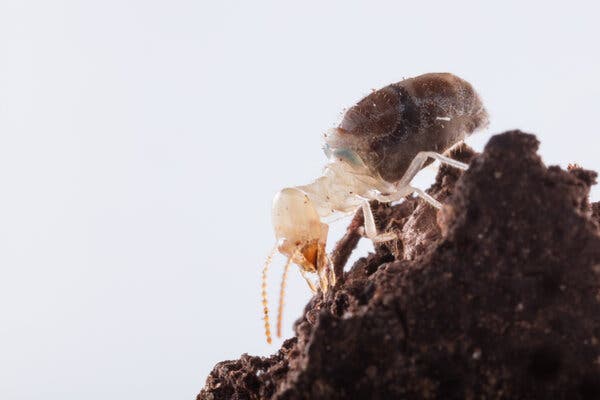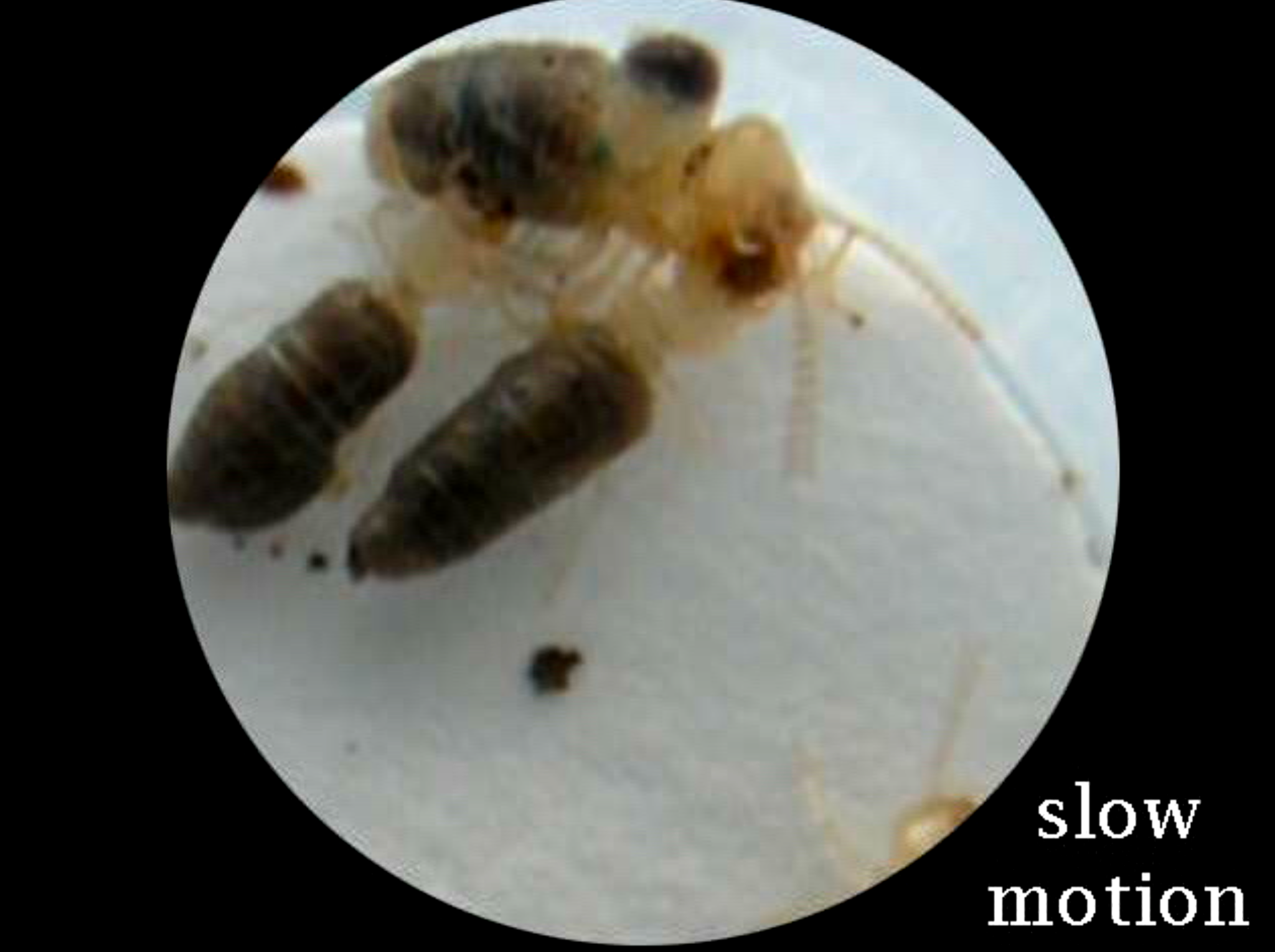Scientists studied the unusual chemical reaction used by a species of the insect in an act of self-sacrifice to save nests from invaders.
The video shows a termite worker under attack. Three enemies of another species scramble over its body, limbs dancing and mandibles closing. Suddenly, the attacked worker’s back erupts and caustic foam pours from its body. It will die, but this fountain of toxic material may save its nestmates from the invaders.
Look closer at the video, and you may notice two half-moons of deep blue embedded on this worker’s back. Some years ago, scientists observing this species of termite, Neocapritermes taracua, in French Guiana realized that these blurry shapes were in fact solid knobs of a potent enzyme, tucked into pockets in its carapace. When the termite worker is confronted by dangerous foes, it will rupture a compartment and bring a hitherto mostly harmless fluid into contact with the enzyme, creating that lethal, explosive and nest-defending reaction.
Scientists wanted to get a better look at this perilous enzyme. In a paper published Thursday in the journal Structure, a team of biologists described a detailed analysis they made of the dangerous blue backpack the termites carry, including an unusual bond they identified that may be linked to its deadly burst.
This termite is not the only insect that kills invaders by sacrificing itself, said Jana Škerlová, a structural biologist at the Czech Academy of Sciences and an author of the new paper. For instance, flying ants, which, like termites, are colonial insects, have also been observed performing a similar behavior. When workers in a colony are sterile, they can help their own genes survive by protecting their relatives who can reproduce.

What’s special about Neocapritermes taracua is that, until it is attacked, the insect keeps a relatively innocuous molecule physically separate from an enzyme, named blue laccase BP76. When blue laccase BP76 mixes with that molecule, a single hydrogen atom is removed, turning it into a toxin.
